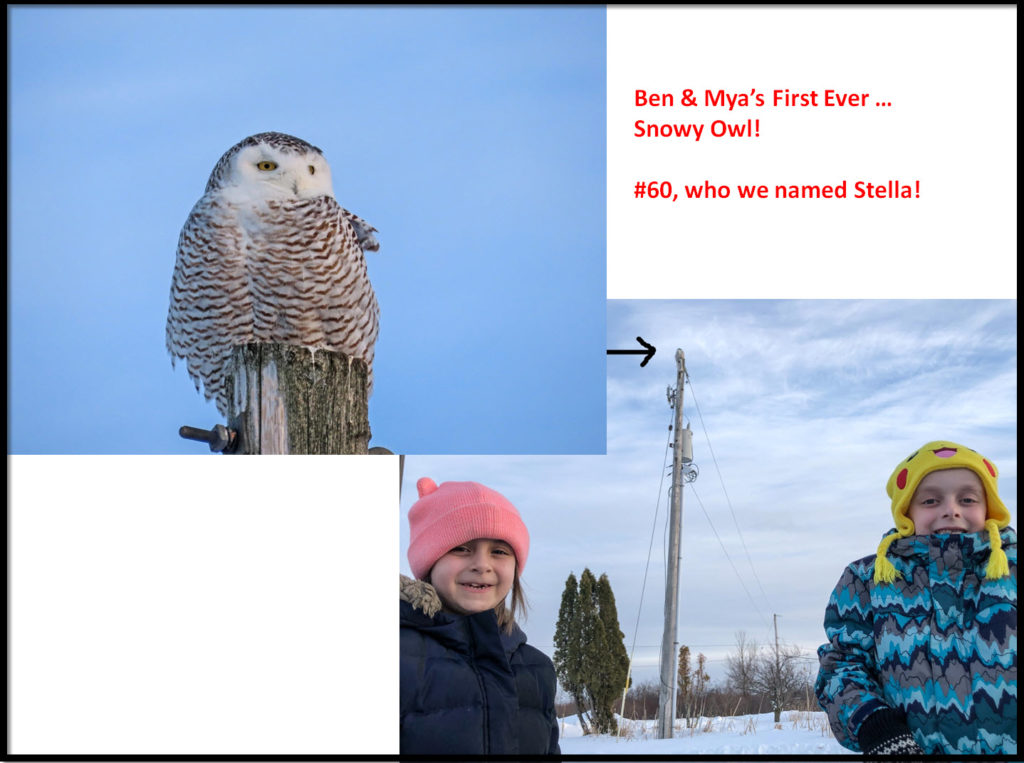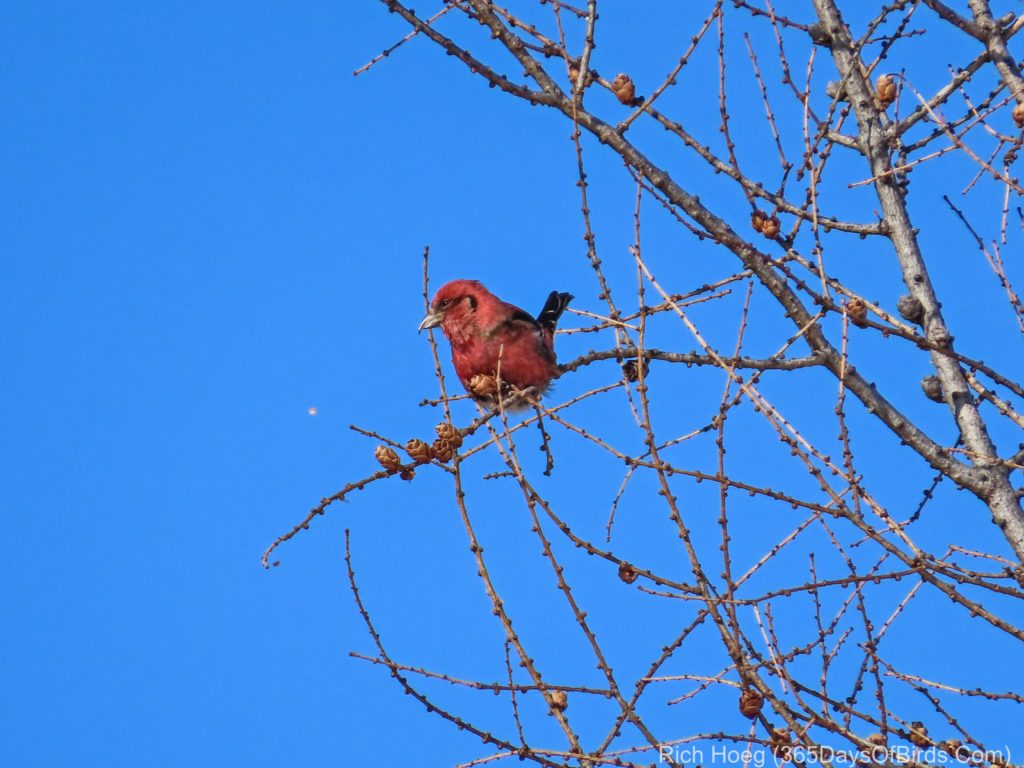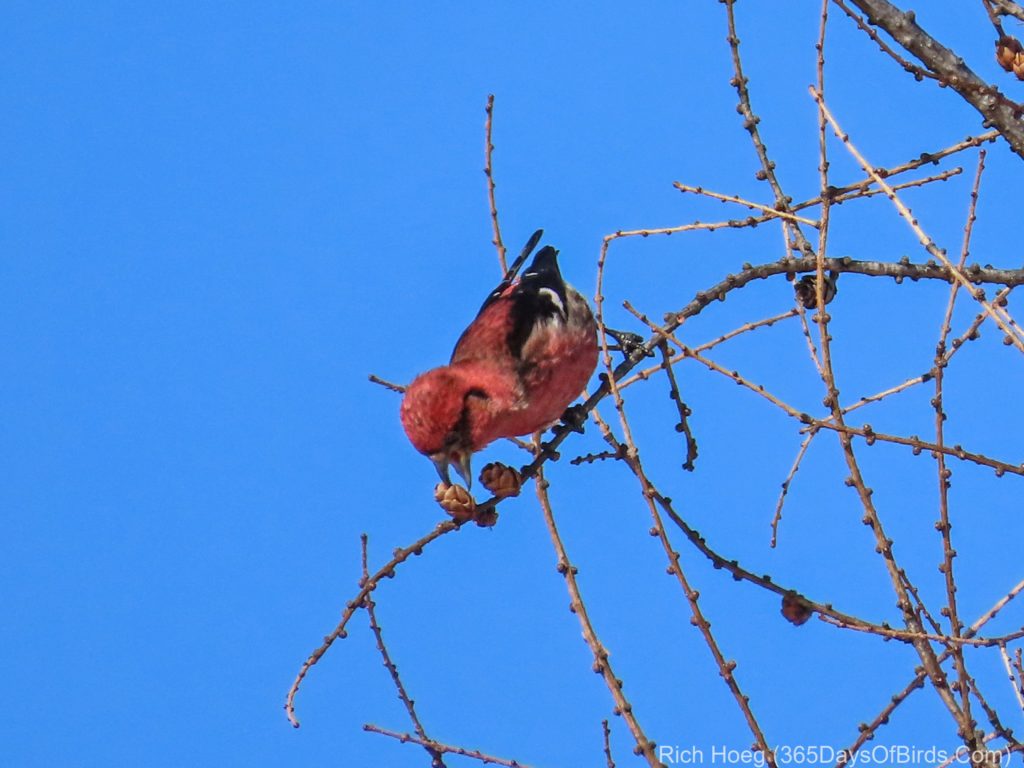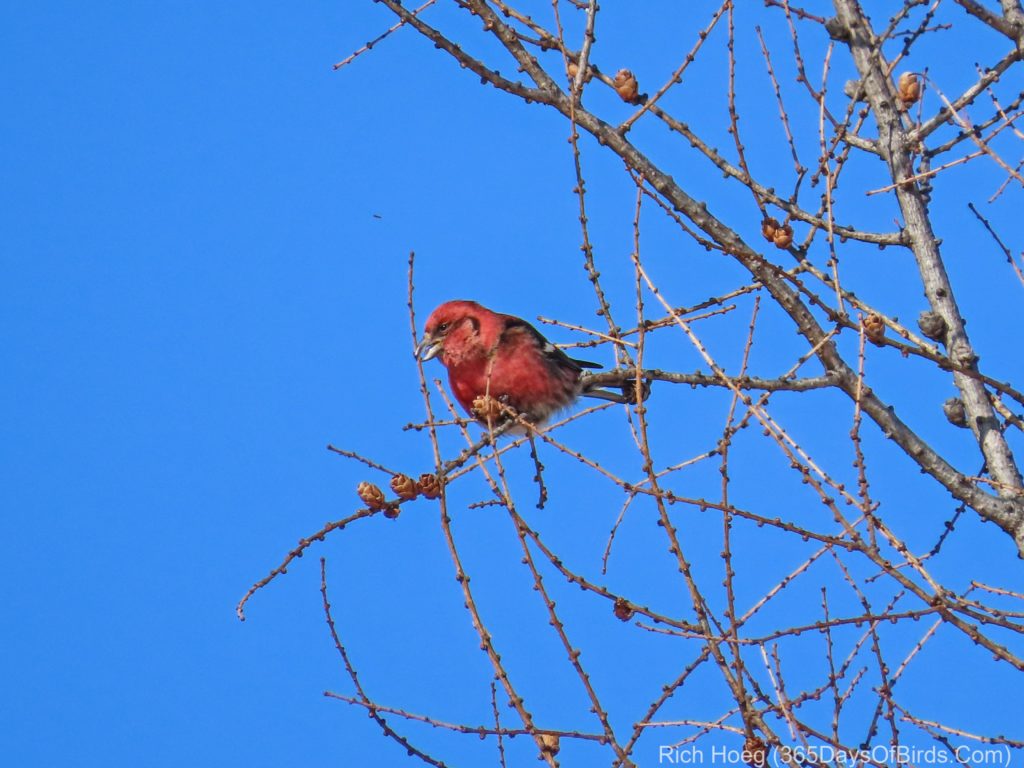Question: Ever wonder why White-Winged Crossbills have a hooked beak?
Answer: To pry open cones on Tamaracks and Spruce!
Red Crossbills and White-Winged Crossbills are some of the only birds which are able to pry open the cones from Tamarack Pines and Black Spruce trees … our two common trees found in Sax-Zim Bog. Yesterday morning I saw about 40 crossbills enjoying a morning breakfast. In addition, once again they pointed out to me where the Northern Hawk Owl was minding his own business in search of voles.
One final image … my two eldest grandchildren visited this past weekend. They saw their first owl … a Snowy!
Discover more from 365 Days of Birds
Subscribe to get the latest posts sent to your email.



Just love it!
What lucky grandchildren you have. Your posts never fail to delight me.
Lovely as always Richard! How do you manage to see so many owls? I saw my first here in the Citrusdal area of The Western Cape where I live but it was a Cape Eagle Owl which I’d never seen before so I was quite happy. I also got a photo but really a very bad photo as my Canon Powershot SX60HS doesn’t handle low light very well and it was after sunset. You are SO lucky with owls that sit around in broad daylight apparently waiting for you to photograph them! May you have many more!
Sue: Wow … it would be cool to both bird and bike in the Western Cape region of South Africa. I would be interested to learn more about your region and what you see. Perhaps one day in the future Molly and I will have to take our bicycles and explore your area on a self-supported tour. One of our rides this summer will see us up in the Norwegian Arctic.
With respect to how I find owls sitting around in broad daylight, it is a combination of habitat knowledge, shared intelligence from friends, and living in a very cold part of the world (not like South Afr8ca). In cold, snowy, winter regions, owls establish winter hunting territories. For a few months every year, if you can figure oit there winter territory, they are relatively easy to refind during that period. In addition, prey gets very scarce at this time of year. The weather service just reported yesterday we have well over 2 meters of snow this winter. Finding something to eat through all this snow is hard, which means owls in the winter will often hunt for about an hour after sunrise, or before sunset. Thus, I am out at those times to maximize my chances. In the summer, these same owls only hunt at night. However, the Northern Hawk Owl is an exception. Among owls it seems to hunt during the day. Thus, I can visit an area where I know if hunts and hope it appears. As noted, my other fine feathered friends often complain profusely when the NHO arrives onmthe scene.
Thanks for your kind comments. Keep birding, and my main advice for the Sx60 is to always use a monopod for stabilization. When you are at full zoom, even with in camera anti-shake, it makes a huge difference. Finally, do a little tweaking in post processing for lighting. Normally, I only edit clarity, shadows, and highlights. These few changes can really help display plumage and feathers.
Rich